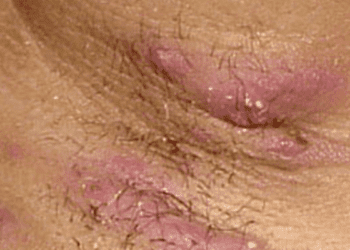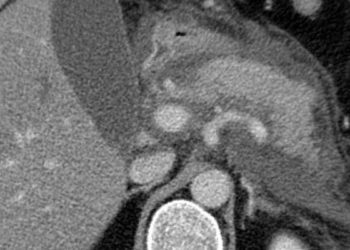#VisualAbstract: Ixekizumab for patients with non-radiographic axial spondyloarthritis (COAST-X)
1. Ixekizumab, an IL-17 inhibitor, elicits disease response in patients with non-radiographic active axial spondyloarthritis who have failed treatment with NSAIDs.
Evidence Rating Level: 1 (Excellent)
Axial spondyloarthritis is a chronic inflammatory disease of the axial skeleton that is typically treated with non-steroidal anti-inflammatory drugs (NSAIDs). Biologic disease-modifying anti-rheumatic drugs (bDMARDs) have also been recommended for patients with active disease, however, only a small number of TNF inhibitors are approved for patients with non-radiographic disease at this current time. Therefore, alternative bDMARD options are needed. In this randomized controlled trial, 303 patients with active axial spondyloarthritis with objective signs of inflammation were assigned to either subcutaneous 80 mg ixekizumab every 4 weeks (q4w) or every 2 weeks (q2w), or placebo, to assess the proportion of patients achieving an Assessment of SpondyloArthritis international Society-40 (ASAS40) response. The ASAS40 response is defined as an improvement of 40% or more and an absolute improvement from baseline of 2 or more units (range 0-10) in at least 3 of 4 domains: patient global score, spinal pain score, function score, and inflammation score. Patients were eligible if they had an inadequate response or intolerance to NSAIDs, were bDMARD-naïve, and did not have definite radiographic sacroiliitis. Researchers found that a higher proportion of patients in both ixekizumab groups achieved the primary outcome compared to the placebo group at 16 weeks (q4w: 35%, p=0.0094; q2w: 40%, p=0.0016) and 52 weeks (q4w: 30%, p=0.0045; q2w: 31%, p=0.0037). Patients in each ixekizumab treatment group also had greater reductions in disease activity and had greater improvements in Medical Outcome Short Form-36 Physical Component Summary (SF-36 PCS) scores than patients in the placebo group. The rate of at least one treatment-related adverse event was 57% in the placebo group, 66% in the ixekizumab q4w group, and 77% in the ixekizumab q2w group, similar to previous ixekizumab studies. The most common treatment-related adverse events were nasopharyngitis and injection site reactions. The rate of serious adverse events was similar across the three groups. Overall, results from this study support the use of ixekizumab in patients with non-radiographic axial spondyloarthritis after treatment failure with first-line therapies.
Click to read the study in Lancet
©2019 2 Minute Medicine, Inc. All rights reserved. No works may be reproduced without expressed written consent from 2 Minute Medicine, Inc. Inquire about licensing here. No article should be construed as medical advice and is not intended as such by the authors or by 2 Minute Medicine, Inc.







